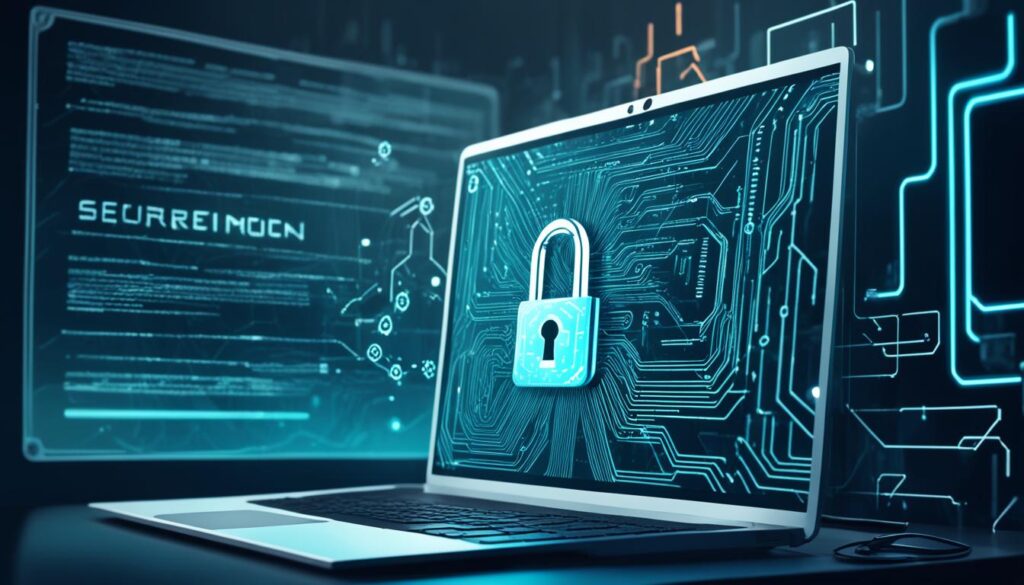In the realm of software security, an unexpected statistic casts a shadow on the digital landscape: a staggering 70% of technology organizations encountered software supply chain attacks in 2021. As digital threats loom larger than ever, the importance of managing code signing certificates intensifies. In sprawling IT ecosystems, a single certificate is not just a drop in the ocean – an average IT environment is home to an astonishing 50,000 such certificates, according to a DigiCert report.
These certificates are the cornerstone of secure code signing practices, ensuring that software comes from a verified source and remains untampered. Yet, the expanding digital certificate sea demands vigilant management and forward-thinking strategies that can secure yet simplify SSL certificate management.
With meticulous attention to visibility, automation, and the safeguarding of keys, organizations can navigate these treacherous waters. This article dives deep into the strategies and practices that fortify software against the unrelenting tide of cybersecurity threats, bolstering the trust in your software’s integrity and the identity it carries.
Key Takeaways
- Understanding the scale of software supply chain attacks underlines the critical necessity for secure code signing practices.
- Visibility into the inventory of code signing certificates is foundational for SSL certificate management.
- Automation is key in handling the large swathes of certificates efficiently, steering clear of manual management errors.
- Protecting code signing certificates ensures the identity and integrity of software remains uncompromised.
- Strategic management of keys and certificates is essential for maintaining resilient and trustworthy software security infrastructures.
The Critical Role of Code Signing Certificates in Software Security
With the digital realm becoming a cornerstone of global commerce and communication, the code signing process stands as a critical safeguard, enabling organizations to assert their credibility and the integrity of their software products. However, recent statistics have shown a disconcerting surge in security breaches associated with the software supply chain, demonstrating an urgent need for robust PKI infrastructure maintenance protocols.

Understanding the Surge in Software Supply Chain Attacks
Software supply chain attacks are nothing short of a burgeoning threat, their frequencies increasing by a staggering 661%. These attacks penetrate the interconnected webs of software production, targeting everything from source code to distribution mechanisms. Such vulnerabilities can compromise vast segments of the software supply chain, propagating tainted code through seemingly legitimate updates and applications.
Boosting Software Integrity and Digital Identity Through Code Signing
As the first line of defense, code signing certificates bolster software integrity, avowing the authenticity of software vendors and guaranteeing that the code remains untampered from inception to launch. Given that approximately 97% of modern code bases are reportedly composed of open-source components, which often lack the stringent oversight of commercial software, the management and inventory of these components are paramount for ensuring security and reliability.
The rigorous maintenance of PKI infrastructure is therefore not only a matter of securing a network or a product; it is an ongoing endeavor to maintain the trust and confidence users place in technology providers. With this trust comes the immense responsibility to uphold the standards and practices that preserve the sanctity of our digital ecosystem.
Managing Code Signing Certificates
In today’s digital ecosystem, the sheer volume of code signing certificates in use can pose significant management challenges. With the digital certificate lifecycle in mind, organizations are increasingly turning towards automation to streamline both issuance and maintenance of these crucial security components.
The Challenge of Managing a Massive Volume of Certificates
For many IT departments, the task of certificate management is daunting. With each certificate requiring vigilant monitoring, renewal, and possibly revocation, the associated overhead can be substantial. Considering that a missed expiration date or overlooked vulnerability could spell disaster, the precision required for manual certificate management leaves much room for human error.

Automated Certificate Issuance as a Solution for Efficiency
Automation stands out as a beacon of efficiency in the face of these challenges. By adopting automated certificate issuance, organizations can expect greater accuracy and consistency, ensuring that the secure code signing practices are reliably upheld throughout the certificate’s lifecycle.
| Benefits of Automation | Manual Process Pitfalls |
|---|---|
| Consistent adherence to security policies | Increased risk of human error |
| Timely renewal and deployment of certificates | Possible lapses in certificate validity |
| Reduction of administrative burden | Resource-intensive tracking and management |
| Quick response to vulnerabilities | Delayed reaction to security threats |
By integrating automated solutions into their operations, businesses can not only improve their security posture but also allocate their IT resources more efficiently. The move to automation is becoming less of an option and more of an imperative in sustaining secure code signing practices in an age of ever-evolving threats and increasingly complex digital infrastructures.
Achieving Full Visibility and Control in the Certificate Environment
When it comes to certificate authority management, transparency and authority are non-negotiable. Establishing full visibility and control within an organization’s IT environment is crucial, as this ensures that secure code signing practices are not compromised by overlooked vulnerabilities. This kind of efficiency is foundational to maintaining a fortified stand against threats that target certificate integrity.

Central to realizing such an environment is the deployment of a systematic inventory process to locate and categorize all keys and certificates. By understanding and clearly outlining use cases for each, IT teams can ensure an optimal level of organization and readiness. This encompasses the thorough and routine examination of digital certificates—phasing out those that are expired or have been revoked—and can be a part of a regular review pipeline for IT security personnel.
- Dependabot – Monitors dependencies for flaws, automatically generating pull requests for updates.
- Sonatype – Offers analysis and intelligence on open-source components to prevent the use of vulnerable software.
- Snyk – Delivers real-time scanning and fixes for vulnerabilities in open-source dependencies.
These tools provide a streamlined path to enhancing control over your digital resources. The incremental step of incorporating such applications is part of a wider trend towards innovation in SSL certificate management, delivering user-friendly solutions to complex challenges.
By harnessing these technologies and maintaining precise records, organizations can ensure that certificate authority management evolves from a cumbersome necessity to a cornerstone of their cybersecurity infrastructure. This pivotal transformation supports an IT landscape where visibility and control are paramount, helping to uphold the trust and integrity of one’s digital footprint.
Automation in PKI Infrastructure Maintenance: Key to Streamlined Management
Transitioning towards automated systems significantly uplifts the efficiency of PKI infrastructure maintenance. Far from the cumbersome, error-prone manual processes of the past, today’s automated systems are designed to enhance security while simplifying the management workload. Automation heralds a new era in which complex tasks associated with certificate lifecycle management become more manageable and less resource-intensive.
Moving to Cloud-Based PKI Services for Greater Agility
One of the most impactful trends has been the shift from traditional on-premises PKI solutions to robust, cloud-based PKI services. This migration epitomizes the modern drive towards agility in IT operations. As organizations grapple with increasing digital certificate volumes, cloud-based platforms offer unparalleled scalability and flexibility, supporting an agile response to emergent SSL certificate management needs.
The agility of cloud-based PKI services is not merely a matter of scalability; it also encompasses the ability to swiftly adapt to evolving security standards, ensuring compliance and maintaining the robustness of digital identities. Additionally, cloud infrastructures provide a fertile ground for innovation, continuously incorporating advanced security features that further reinforce the integrity of PKI systems.
Embracing PKIaaS to Reduce the Strain on IT Resources
In the quest for reduced complexity and IT resource conservation, organizations are increasingly turning towards PKI as a Service (PKIaaS). With PKIaaS, businesses re-allocate the burdensome work of certificate monitoring and maintenance to service providers specializing in these critical areas. This not only boosts the security posture of an organization but also frees up valuable IT staff to focus on strategic initiatives that drive business growth.
Furthermore, PKIaaS models come with the dual benefits of reducing costs associated with maintaining in-house PKI expertise and infrastructure while leveraging the service provider’s dedicated focus on staying ahead of the security curve. As such, embracing PKIaaS becomes a strategic move for managing digital identities effectively in the ever-expanding realm of online security.

As we delve deeper into the digital age, it’s clear that PKI infrastructure maintenance is undergoing a revolutionary transformation. By automating processes and utilizing cloud-based PKI solutions and PKIaaS, organizations can realize a more proactive, secure, and cost-efficient approach to managing the lifecycles of digital certificates. These forward-thinking strategies are essential in mitigating risks and ensuring the continued trust in and reliability of digital transactions.
Strategies to Protect Your Private Keys and Maintain Trust
Ensuring the integrity of private keys is crucial in the realm of code signing, where secure code signing practices are not just advised but essential. The objective is to protect private keys from both internal and external threats, thereby helping your organization maintain trust with users and stakeholders. Here are notable strategies that organizations can implement to safeguard their cryptographic keys effectively:
- Adopt a zero-trust security model, which assumes that both internal and external networks are potentially compromised. This approach requires verification at every stage, substantially reducing the chance of unauthorized access.
- Principle of least privilege should be enforced, ensuring that only necessary permissions are granted for key access, effectively minimizing the potential attack surface.
- Secure storage of keys in Hardware Security Modules (HSMs) or devices compliant with FIPS 140 Level 2 standards, providing a secure cryptographic infrastructure for managing keys.
- Implementing strong password policies and multi-factor authentication ensures that keys are accessed only by authenticated individuals.
- Regular key rotation policies serve to limit the duration a key is active, reducing the risks associated with key exposure and potential breaches.
These strategies collectively form a robust framework for secure key management. They fit within a comprehensive security strategy designed to protect private keys against evolving threats and in doing so, uphold the trustworthiness of your digital assets.
| Strategy | Benefits | Implementation Considerations |
|---|---|---|
| Zero-Trust Security Model | Reduces unauthorized access risk | Requires thorough verification processes |
| Principle of Least Privilege | Minimizes attack surface | Regular review of user permissions |
| Use of HSMs/FIPS 140 Level 2 Devices | Secures keys in tamper-resistant hardware | Investment in certified secure hardware |
| Strong Password Policies | Prevents unauthorized key access | Enforce complexity and change cycles |
| Key Rotation Policies | Limits exposure time of keys | Automation of key lifecycle management |
By implementing these strategies, organizations can lay a sturdy foundation for securing their code signing process. It is imperative to routinely evaluate and improve upon these practices, as the digital landscape continues to evolve with new threats and vulnerabilities.

Seamless Integration of Code Signing Into SDLC to Mitigate Risks
The concept of integrating code signing directly into the Secure Development Lifecycle (SDLC) is not just an enhancement but a necessity to mitigate risks effectively. By focusing on this integration, we’re ensuring that every phase of the SDLC is fortified with security measures that are both robust and non-disruptive to productivity.
Code signing is a process that, when woven into the fabric of the SDLC, provides authenticity and integrity to software artifacts. This harmonious integration allows development teams to comply with security policies without hindering the software development pipeline. Below is an outline of how code signing can be assimilated at each stage of the SDLC model:
- During design, consider the requirements for code signing to prepare the groundwork early on.
- In the development phase, use self-signed certificates to ensure the preliminary security of code.
- Throughout testing, sign code with test certificates that replicate the properties of production certificates without assuming their level of trust.
- For staging, utilize test certificates trusted by the staging environment to catch any potential issues prior to production.
- Finally, in the release phase, implement production certificates that ensure the highest level of trust and verification for end-users.
| SDLC Stage | Certificate Type | Purpose | Level of Trust |
|---|---|---|---|
| Design | None | Prepare requirements | N/A |
| Development | Self-Signed Certificates | Security of preliminary code | Internal Trust |
| Testing | Test Certificates | Security testing resembling production | Limited Trust |
| Staging | Staging Test Certificates | Pre-production integrity confirmation | Staging Trust |
| Release | Production Certificates | Assurance of integrity and origin to end-users | Public Trust |
Frameworks like the NIST SSDF recommend best practices and standards to help teams integrate code signing seamlessly into their SDLC. This structured guidance ensures that every release of software is trustworthy, safeguarding against unauthorized tampering and maintaining the credibility that users expect.
Adopting a secure SDLC with integrated code signing not only mitigates risks but also acts as a quality seal for your software development endeavors.
Continuous Monitoring for Vulnerabilities in Code Signing Practices
In today’s digital landscape, the significance of continuous monitoring for vulnerabilities cannot be overstated. Efficient monitoring acts as an early warning system, detecting potential security issues before they escalate into full-blown threats. As the backbone of secure software distribution, code signing practices demand regular assessments to ensure the utmost integrity of our digital infrastructure.
Utilizing Tools for Reporting and Addressing Certificate Weaknesses
Achieving a robust security posture involves leveraging sophisticated tools designed for intensive scrutiny and report generation. These platforms aid in identifying weaknesses within certificates that could potentially be exploited by cyber adversaries. By empowering organizations with actionable insights, vulnerabilities can be addressed swiftly, maintaining the security perimeter around code signing practices.
Establishing Regular Audits to Secure Your Code Signing Process
Complementing automated vigilance, the adoption of regular audits provides a hands-on approach to PKI infrastructure maintenance. Through methodical examinations and verifications, the entire code signing process is scrutinized, ensuring compliance with security standards and cementing the trust in our public key infrastructure.
| Vulnerability Monitoring Features | Benefits | Frequency of Audits |
|---|---|---|
| Real-time alerts | Immediate notification of potential threats | Quarterly |
| Detailed vulnerability reports | Comprehensive analysis leading to informed decisions | Bi-annually |
| Certificate validity checks | Ensuring certificates are current and untampered | Annually |
| Revocation status monitoring | Verifies certificates have not been revoked or compromised | As needed |
To encapsulate, the convergence of automated certificate issuance, vigilant continuous monitoring, and thorough manual audits crafts a bulwark defending against the exploitation of code signing vulnerabilities. With these measures, organizations fortify their defenses, safeguarding the trust their users place in their digital offerings.
Responsiveness to Compromised Certificates: A Step Towards Resilience
In today’s rapidly evolving digital landscape, resilience in certificate authority management becomes non-negotiable when confronting compromised certificates. The discovery of signed malware or a breach in private keys demands swift action, not only for the sake of compliance but as a demonstration of a robust security posture. Here’s a guide on how to respond effectively to these critical events.
The initial step involves an immediate report to the certificate authority (CA) to facilitate the suspension of the compromised certificate, preventing any further misuse. This action entails detailed communication with your CA, outlining the nature of the compromise and the certificates affected. Following, a procedure for revocation should be put in place, introducing an essential layer of protection in certificate lifecycle management. A swift response not only mitigates further risks but is fundamental in upholding the principles of trust and integrity that define secure transactions and interactions online.
| Event | Action Required | Long-Term Strategy |
|---|---|---|
| Compromised Certificate Detected | Immediate CA Notification & Revocation Request | Implement Routine Security Audits |
| Signed Malware Identified | Investigation & Revocation Process | Strengthen Key Protection Measures |
| Private Key Breach | Revoke All Associated Certificates | Continuous Security Training for Stakeholders |
Time-stamping plays a pivotal role by allowing any software signed before the revocation to maintain its integrity and validity. Yet, it’s beyond just revocation; it’s about establishing a culture of resilience that permeates throughout your organization’s approach to certificate authority management. With every incident, there’s an invaluable opportunity to learn, adapt and fortify your defenses against future threats to your cryptographic assets.
“Building resilience against compromised certificates is not just about reaction—it’s about establishing a proactive, preventive infrastructure that encompasses rigorous audits, employee education, and state-of-the-art security technology.”
To foster such endurance, regular training sessions, comprehensive system audits, and employing the latest in encryption technologies all contribute to a formidable foundation that upholds security and trust for all stakeholders involved.
Empowering Development and Security Teams with Code Signing Knowledge
At the heart of any robust security posture is the effective collaboration between developers and IT security teams—two entities with crucial intersecting roles in the realm of secure code signing knowledge. Enhanced cooperation in this domain is not just requisite; it forms the linchpin of an organization’s ability to ward off threats and fortify the software development life cycle (SDLC). As such, a shared understanding of code signing is imperative. Educating developers on secure code signing practices, providing them with proper access controls, and integrally incorporating IT security insights into day-to-day processes can drive heightened awareness and stronger defenses.
“Bringing together the expertise of developers and IT security teams is foundational. When both parties are well-versed in secure code signing protocols, we see a direct impact on the protection against vulnerabilities.”
Let’s consider how to facilitate this partnership:
- Offer continuous training to both developers and IT security staff, ensuring each team is aware of best practices and the latest threats.
- Clearly define the roles and responsibilities related to the code signing process within your organization.
- Implement controls that align with both development efficiency and security mandates to promote a proactive security culture.
Developers thrive when they have tools that mesh seamlessly with their workflow. Accordingly, the IT security team’s task is to integrate secure code signing checks and balances within these tools, thus minimizing the impediment to productivity. Here is an illustrative guide:
| Development Stage | Security Measure | Tool Integration Example |
|---|---|---|
| Code Creation | Pre-commit Hooks for Security Scans | GIT Integration |
| Code Review | Automated Security Review Approvals | Pull Request Checks |
| Pre-Deployment | Automated Code Signing | CI/CD Pipeline Scripts |
| Post-Deployment | Key and Certificate Expiry Monitoring | Monitoring Systems Integration |
To surmount the challenges inherent in securing the code signing process, it is fundamental for developers to acquire secure code signing knowledge as a standard skill. Simultaneously, IT security teams must adapt processes to align with agile SDLC practices. Strengthening developer and IT security team collaboration manifests as a mutualistic approach, bolstering the security framework and ultimately benefiting the entire digital ecosystem.
Conclusion
The digital landscape is rapidly evolving, and with it, the nature of cyber threats is becoming increasingly complex. This underscores the critical necessity for exceptional secure code signing practices. Anchoring these practices is the adept handling of code signing certificates—a responsibility that demands constant vigilance and adeptness to safeguard against the vulnerabilities that can compromise the software supply chain.
Recognizing the significance of SSL certificate management is paramount. It acts as the keystone ensuring software authenticity and user trust. To navigate this complexity with finesse and reliability, the implementation of automated certificate issuance and rigorous PKI infrastructure maintenance has emerged as a compelling imperative. These automated systems offer a beacon of efficiency in the high seas of certificate management, where even a momentary lapse can lead to significant security breaches.
Ultimately, the confluence of technological savviness and collaborative effort forms the bedrock of a fortified digital environment. As organizations gear up to maintain and enhance the integrity of their operations, the role of a well-informed and unified workforce is essential. A future-proof enterprise that prioritizes the security and reliability of its software is one that invests wholeheartedly in the meticulous management of its digital certificates. This commitment reflects a profound understanding that robust security measures are the lifeline of sustained trust and a sterling reputation in the digital realm.
FAQ
What are code signing certificates, and why are they important?
Code signing certificates are digital certificates used to verify the identity of the software publisher and ensure that the code has not been altered or compromised after it was signed. They are crucial for maintaining software security and user trust.
How has the rise in software supply chain attacks affected code signing practices?
The rise in software supply chain attacks has underlined the importance of secure code signing practices, as attackers increasingly target vulnerabilities in the software development and distribution process to distribute malicious code.
What challenges do organizations face in managing a large volume of certificates?
Organizations often struggle with the time and resources required to manage a large volume of certificates effectively, keeping track of expiration dates, renewals, and ensuring that certificates are safely stored and used.
How can automation improve the management of code signing certificates?
Automation can streamline the digital certificate lifecycle, reducing the risk of human error, ensuring timely updates, and freeing up IT resources to focus on other security concerns.
Why is visibility and control crucial in SSL certificate management?
Having visibility and control over SSL certificates helps prevent security breaches by ensuring that only valid and authorized certificates are in use, and that expired or compromised certificates are quickly identified and dealt with.
What are PKIaaS and cloud-based PKI services, and how do they help?
PKI as a Service (PKIaaS) and cloud-based PKI services are solutions that offload the management of public key infrastructure (PKI) to cloud providers, offering scalability, reliability, and security while reducing the strain on internal IT resources.
What are the best practices for protecting private keys?
Best practices include storing keys in secure hardware modules, enforcing least privilege access controls, regularly changing passwords, and rotating keys to prevent unauthorized access and use.
How does integrating code signing into the SDLC help mitigate risks?
Integrating code signing into the Secure Development Life Cycle ensures that security checks and balances are part of the development process from the start, reducing risks and vulnerabilities in the final software.
What tools and processes help in the continuous monitoring of certificates?
Tools and processes that offer real-time monitoring, alerts, reporting, and automated scanning can identify vulnerabilities and ensure certificates are always up-to-date and secure.
What should an organization do if a code signing certificate is compromised?
The organization should immediately report the compromise to their certificate authority to revoke the certificate, assess the scope of the impact, and take appropriate measures to prevent further misuse.
How can collaboration between development and IT security teams improve code signing processes?
Collaboration ensures that security measures are designed to fit seamlessly within development workflows, fostering a culture where secure practices are a shared responsibility and enhancing overall security.


